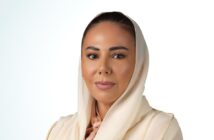As part of Vision 2030, the Kingdom has prioritized education in its development plans, aiming to establish Saudi Arabia as a future education hub. Selecting the right school is one of the most significant decisions for your family, and fortunately, living in Saudi Arabia offers a wealth of educational options to choose from.
Whether you just arrived in the Kingdom and are feeling overwhelmed with the choices, just starting with the education journey of your little one or are just looking for a change, here are some things to consider in choosing the right school for your child.
Location
With a population of over 7 million, Riyadh’s bustling road traffic can be quite challenging. For anyone moving to the city, the best advice is to prioritize finding a school before securing accommodation—ideally, choose one close to your workplace. Navigating school drop-offs and pick-ups can be stressful, and although many compounds and schools provide bus services, daily travel times can vary significantly.
Cost
School fees can vary significantly, so it’s essential to consider initial costs such as administration fees, uniforms, and school trips. Be sure to inquire about the availability and costs of extracurricular activities and clubs during your initial research. Think about what fits your long-term budget: would you prefer a government, private, or non-profit school? Also, check if your employer offers any fee subsidies and what the payment schedule looks like. Ultimately, the school fees should align with your family’s budget and lifestyle.
Curriculum and Special Needs Provision
What type of curriculum best supports your child’s future? Currently, the IB system is gaining popularity, while British and American curriculums remain in high demand. Additionally, BTEC offers a specialized, hands-on alternative for senior students. Consider whether the school has a Learning Support team to address your child’s unique educational needs, and check for preferred language options. Is it an inclusive school, co-ed, or does it only cater to certain grade levels? Choose a school that aligns with your values and your child’s needs to ensure a smoother educational journey.
Academics, Sport, and Wellbeing
We all know the importance of good academics, but we all know that great academic performance must go hand in hand with the wellbeing of children in school — are they happy in their environment, are their interests nurtured, and do they feel valued?
A student’s published end-of-the-year result is a good indicator of academic standards. Are there opportunities for more sports inclined students to attend important meets – local as well as international competitions?
What is the school’s stance on wellbeing, bullying, and discipline — is there a good counselling and student support service department to help your child with their different needs or situations?
The school should have a dedicated safeguarding team that looks after and protects the interests of every child on campus ensuring the feeling of safety and support throughout.
Visit the School
It’s highly beneficial to schedule one or two school tours with your child. This provides an opportunity to ask important questions and gently introduce your child to the school environment, involving them in the decision-making process. Pay attention to the size of classrooms and facilities, and encourage your child to share their thoughts. Recognizing and addressing any concerns can help ease the transition for both of you. Additionally, try to connect with families already at the school; they can offer valuable insights and help your child see a friendly face before starting.
Choosing the right school is a very important decision but remember that your support and encouragement are the most important ingredients in your child’s education journey.
Popular Curriculum Explained
International Baccalaureate (IB)
IB offers a more rounded, holistic approach to education. The IB offers the Primary years, Middle years and Diploma Programme. The focus of the curriculum is broad and very internationally focused with a worldwide standardized curriculum. The IB Diploma consists of 6 subjects which are a mix of humanities, sciences, languages, art and the core subjects. Additionally it incorporates Theory of Knowledge, Extended Essay (EE) and CAS (Creativity, Activity and Service) components-this wide range of subjects fosters skills such as critical thinking, global awareness and interdisciplinary connections.
British System
The British system, also known as the National Curriculum for England, consists of five educational stages. It begins with Reception or Early Years, followed by Key Stage 1 (ages 5-7, Year 1 and 2) and Key Stage 2 (ages 7-11, Years 3-6). Next is Key Stage 3 (ages 11-14, Years 7-9) and Key Stage 4 (ages 14-16, Years 10-11), culminating in the GCSE examinations. Finally, Key Stage 5, or Sixth Form (ages 16-18, Years 12-13), offers a two-year A-Level program. At the end of Year 9, students select a variety of subjects to study in depth for their GCSEs, and in A Levels, they specialize in three or four subjects. This focused approach promotes a deeper understanding of each subject and is more exam-oriented, helping to set clear career paths or specific university courses in mind.
Business and Technology Education Council (BTEC)
BTEC courses are designed for students who would like to develop practical knowledge and skills in a specific subject (Business, Psychology, Sport, Art and Design) and are looking for a less traditional pathway to learning. The focus is on the practical, skills-based learning with students being assessed throughout the course. The assessments are carried out all through the year as opposed to the end of the year main examinations or tests.
American Curriculum
This curriculum is based on American Common Core State Standards. It has 4 education levels/years and 12 grade levels after the first year of kindergarten. The students are assessed in an ongoing manner through class discussions, group work and many more. Children begin elementary school (grade K) around the age of 5-the next year is grade 1 and it goes up to grade 5, this means that the children finish elementary school around the age of 10. Students attend middle school next where they cover core subjects as well as a variety of social studies subjects. The high school starts grade 9(around the age 14) and ends in grade 12. There are names for each of these years-freshman, sophomore, junior and senior respectively. The high school involves students completing a certain number of credits which end with students receiving a high school diploma. The curriculum offers a broad and balanced educational approach supported by a wide range of co-curricular activities and electives.
We asked a few parents on how they chose the schools for their children:
‘’The factors we first considered when choosing the right school for us were the cost and the academics. We choose BISR because of their strong academic foundation and excellent reputation in Saudi Arabia.’’ – Hannan, mother of 3
‘I wanted my children to be close to their roots as well as going to a school with strong academic focus. The PISES school has sustained a track record of academic excellence year after year.’’ – Ayla, mother of 2
‘’We were living in the US when I found out we were moving to Riyadh. In my case, I was looking for a school that prioritized English as we intended to return to the US in the future. The American school offered us easy school transfer procedure and we received lots of positive feedback about the school from our neighbours and friends.’’ – Paula, mother of 1




